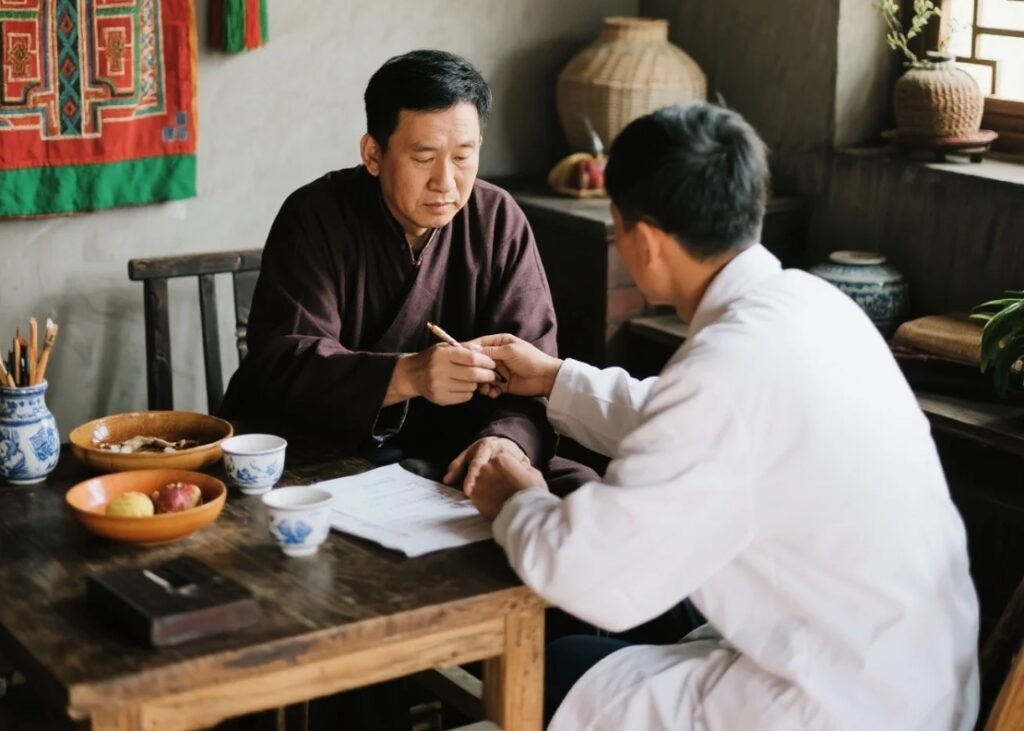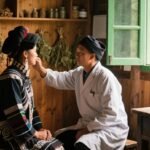Mongb ghab diux ghongd (Throat Discomfort)
Overview
In Miao medicine, this condition is referred to as Mongb ghab diux ghongd or Gagong budang. It is mainly characterized by dryness, itching, pain in the throat, and hoarseness.
In traditional Chinese theory, this condition refers to sore throat or throat obstruction, presenting symptoms like dryness, redness, pain, a sensation of blockage, or discomfort while swallowing. It may also be accompanied by chills, fever, cough, or hoarseness.
From a Western perspective, this aligns with acute or chronic pharyngeal discomfort, most often caused by non-specific inflammation. Symptoms typically include dryness, burning, pain on swallowing, with variable intensity depending on the cause and individual response.
Miao-Medicine Classification
This condition is categorized as a minor disorder and is divided into two types:
Heat-meridian throat discomfort
Cold-meridian throat discomfort
Causes
It is commonly caused by external invasion of wind-heat-damp toxins or due to a weakened physical constitution.
Pathogenesis
Wind, heat, and dampness first invade the throat, damaging blood and body fluids. Recurrent episodes may result in internal heat and the formation of pus.
Diagnostic Criteria
1. Clinical Presentation
Dry, itchy, and painful throat
Swelling and a foreign body sensation
Difficulty swallowing, often accompanied by chills or fever
2. Physical & Laboratory Findings
Diffuse redness and swelling in the pharyngeal mucosa, uvula, tonsils, and lateral pharyngeal bands
Enlarged, tender submandibular lymph nodes
Elevated white blood cells in bacterial infections; increased lymphocytes or monocytes in viral cases

Differential Diagnosis
Pharyngeal Abscess
While both conditions involve throat pain, a pharyngeal abscess is usually more severe and may radiate to the ears. It worsens with swallowing and is often accompanied by high fever and poor appetite. Chronic cases involve a persistent foreign body sensation. This condition tends to affect younger individuals with pronounced tonsillar swelling. In contrast, Mongb ghab diux ghongd presents as diffuse mucosal swelling without localized tonsillar inflammation.
Pattern Differentiation and Herbal Support
1. Heat-meridian Throat Discomfort
Symptoms:
Throat swelling and pain
Fever, headache, cough
Hoarseness, dry mouth, yellow urine
Possible pus formation
Meridian Affiliation:
Heat meridian disorder
Treatment Principles:
Disperse wind-heat
Relieve pain and clear fire
Herbal Formula:
Honeysuckle Flower (jinyinhua) – 10g
Goldenrod (yizhihuanghua) – 15g
Burdock Seed (niubangzi) – 12g
Mahonia (shidagonglao) – 12g
Hogfennel Root (qianhu) – 10g
Cloud Herb (yiduoyun) – 10g
These herbs work together to clear internal heat, detoxify, and soothe the throat.
2. Cold-meridian Throat Discomfort
Symptoms:
Hoarseness
Dry and itchy throat with pain
Dry cough, worse in the morning and evening
Meridian Affiliation:
Cold meridian disorder
Treatment Principles:
Clear heat and dampness
Nourish yin and relieve discomfort
Herbal Formula:
Kuding Tea (kudingcha) – 20g
Ophiopogon Root (maidong) – 15g
Polygonatum Root (yuzhu) – 15g
Asparagus Root (tiandong) – 12g
Lily Bulb (baihe) – 15g
These herbs moisten dryness, nourish yin, support respiratory comfort, and alleviate throat irritation.
Preventive Care
Exercise regularly to improve immunity and reduce susceptibility to external pathogens
Avoid alcohol, tobacco, and spicy foods; maintain a clean and light diet
Keep hands clean and oral hygiene consistent
Avoid exposure to dust, smoke, and cold environments
Balance work and rest, and dress appropriately for the weather
Commentary
Throat discomfort may be acute or chronic and is often influenced by environmental factors such as wind or temperature changes. Early (used in traditional contexts) is important.
While modern treatments may involve antibiotics or antivirals, traditional methods such as herbal therapy, acupuncture, and herbal sprays can also provide effective support. With proper care, acute conditions can resolve within 1–2 weeks. However, untreated or mismanaged cases may lead to complications.
Early diagnosis and consistent care are essential to (helps maintain) progression and support recovery.


Leave a Reply